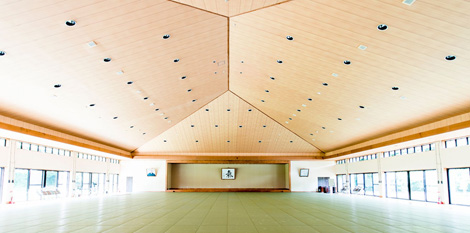“I am an exception. It won’t happen to me.” – this assumption occurs in a variety of everyday situations.
On the roadway, we may see motorists accelerating into an intersection even though thetraffic light is turning red. When the green light at a crosswalk flashes, we may also see pedestrians rushing to enter the crosswalk to cross the street.
Some people are driving cars or riding bicycles while looking at their phones. At crosswalks, we may also see some pedestrians stand at the very edge of the roadway while looking at their phones.
Even if we are fortunate enough to avoid an accident at that moment, when a crisis does happen, we would not be able to respond to it at all in these conditions.
The notion that “I don’t cause accidents”, or “I just don’t get into accidents”, may be subconsciously turning us away from the reality of how accidents occur.
We will be holding a “Ki Forum” on Tuesday, February 11, which is Japan’s National Foundation Day. The main theme will be “Considering Crisis Management”.
But, why crisis management now?
Crisis management refers to policies and systems to deal with/responding to unforeseen disasters, accidents, incidents, etc., so that effective measures can be quickly taken to save lives and prevent the spread of damage. Because of this, some people may see it as an initiative taken by the national government, local governments, companies, etc.
As seen in the crimes caused by “Yami Baito” that have been an issue [in Japan] since last year, we are now in an era where crisis management is no longer “someone else’s business”, but is now a “personal matter” [*“Yami Baito” refers to illegal part-time job ads posted by criminal gangs on social media and encrypted messaging platforms, which try to trick people into committing, or often force people to commit serious crimes].
Technical measures such as securing locks and strengthening security are important, but the most important thing, in my opinion, is to learn the concept of crisis management/how to approach crisis management.
However, there aren’t many opportunities to learn about crisis management. Once we acquire the basics of the concept, we can apply it in any environment, as an individual, at home, at school, at businesses, or in the local community.
This is exactly the same as “Building the Foundation” in Shinshin Toitsu Aikido training.
For this coming Ki Forum, our guest speaker will be Toshiro Yonemura, former Superintendent General of the Tokyo Metropolitan Police Department.
In addition to his role as the Superintendent General of the Metropolitan Police, Mr. Yonemura was responsible for the country’s crisis management as the Deputy Chief Cabinet Secretary for Crisis Management, and also served as Chief Security Officer for the Tokyo 2020 Olympics. Mr. Yonemura will talk about his thoughts on crisis management based on his experience.
Mr. Yonemura says, “In crisis management, it is important to understand people.
” Humans unconsciously try to avoid things they do not desire. Incidents or disasters are something we certainly never want to see happen. So we may unconsciously choose to “not see” them.
Even when an unexpected situation actually occurs, we try to maintain our composure by saying, “There’s no way this kind of things could actually happen”, and convincing ourselves that such a situation is totally within the bounds of normality. This is known as “normalcy bias,” which occurs during major disasters.
Simply understanding “what to do in an emergency” in our head only is an armchair theory. It’s important to be ready to act when a crisis occurs. Mr. Yonemura gives specific instructions on what needs to be done to achieve this.
This is a story from when I went overseas with Koichi Tohei Sensei as his otomo during my uchideshi training.
It was my role as his otomo to check the evacuation route at the hotels where we were staying. I was specifically instructed to check the routes thoroughly on site, including whether there are multiple evacuation routes, or whether we can evacuate even with our eyes closed!
At first, I felt, “Is it really necessary to go this far?” However, I later learned that this was a precautionary measure to allow evacuation in the event of a fire, even if there was no visibility. When I actually checked, I found that we could not use the emergency exits at some hotels because things had been placed there [serving as obstacles to the exit].
Koichi Tohei sensei seemed to have learned this type of precaution from his experiences in the war, but he had me do this as part of my training to acquire “Ki”. Because our Ki is extending, we are able to sense danger, and because our Ki is flowing through everywhere, we are able prepare for it.
At the Ki Forum, we will draw on Mr. Yonemura’s valuable stories based on his experience. Together with all the participants, we will consider the use of our Ki in crisis management.
* This event, Ki Forum 2025, has already taken place.
Translated by Mayumi Case
Edited by David Shaner
Eastern Ki Federation
https://easternkifederation.org/
Original article in Japanese: なぜ今、危機管理なのか (Naze Ima, Kikikanri nanoka)
January 4, 2025
https://shinichitohei.com/japanese/04-%e3%83%a1%e3%83%bc%e3%83%ab%e3%83%9e%e3%82%ac%e3%82%b8%e3%83%b3/35024/


